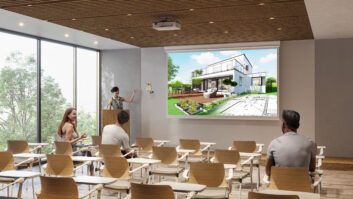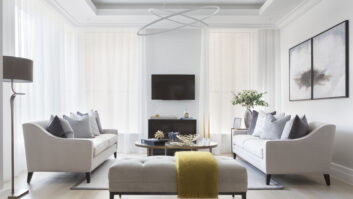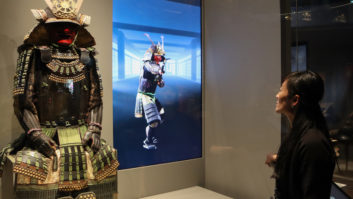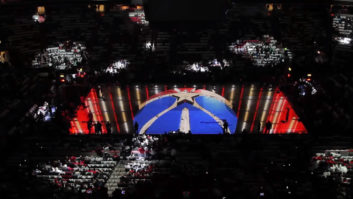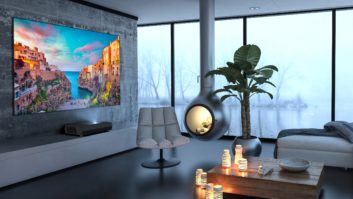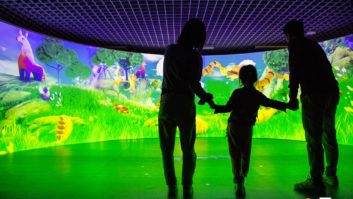Marco Adriaans, CTS, marketing communication manager at Projecta BV, explains the principles behind projection screens and discusses the special materials that are available for increased brightness, increased contrast, 3D projection and more.
Projection screens come in all sizes and sorts, but what really counts is the projection surface, as that determines what happens to the projected light. A white wall is sometimes considered as the cheapest alternative to a projection screen, but this is an unfortunate miscalculation for anyone investing in a professional audiovisual installation. Yes, a wall can be as white as a projection screen, but:
– A white wall absorbs the light instead of reflecting and directing the light as a projection screen would do; and
– A wall usually isn’t as straight as a projection screen, and any inconsistencies on the surface disturb the projected image and spoil the overall experience.
The most important feature of a projection screen is that it distributes light evenly across its surface. In projection terminology this is known as good uniformity.
Gain and viewing angle
A projection surface can have extra ‘gain’ to increase the brightness of the reflected image. Gain is a measure of reflection performance, and is related to a universal reference standard: magnesium carbonate (MgCO3), which reflects projected light back with perfect evenness. Matte White, with a gain of 1.0, is the standard brightness for a projection screen surface. However, several projection surfaces have a higher gain than Matte White. They do this by ‘bundling’ the projected light towards the audience. A high-gain projection surface can be used when extra brightness is required, perhaps because of ambient light or when the projector has only moderate light output.
However, increased gain normally comes at the expense of a narrower viewing angle. The maximum viewing angle is the angle at which the viewer perceives less than 50% of the luminous intensity of the image. A projection surface with a small viewing angle is suited for more narrow seating arrangements. Projection surfaces with an extra wide viewing angle are available for wide-format applications of edge blending (combining the images from two or more projectors, seamlessly).
Contrast, 3D and speaker screening
To enhance the contrast in the projected image, a projection surface with a grey base may be used. This is often required when projecting video images where extra detail is wanted in dark scenes.
In passive stereoscopic 3D projection, selecting the correct projection surface is very important since not every material has the specific capabilities needed. For this type of 3D, the polarisation in the projected light needs to be retained in the reflection from the screen. Projecta offers two specifically designed screen materials for this situation that offer an unparalleled 99% polarisation retention: 3D Virtual Grey and 3D Virtual Black for front projection and rear projection respectively.
When projecting on a wide format projection screen, you have to take the viewing angle into account. With multiple projected images side-by-side, the brightness and detail of each projection has to be consistent from every angle of view to maintain a good edge-blended image. A surface with a very wide viewing angle (such as Projecta’s 160° Ultra Wide Angle screen) is ideal for multiple projector edge blending or wide format screens with short focal length projection lenses. Using a lower-gain material reduces the chance of ‘hot spotting’, but also means that ambient light should be minimised.
A perforated projection surface (such as Projecta’s High Contrast Cinema Vision Sound) can be used to shield a speaker (usually carrying the central audio channel) behind the screen. This is an aesthetically nice solution, although the result will be a compromise in image and sound quality. The screen material will block some of the sound of the speaker and the perforation in the surface will result in a loss of brightness of about 7 to 8%.
Picture: A Projecta screen installed at HP Moscow – Installer: Auvix
